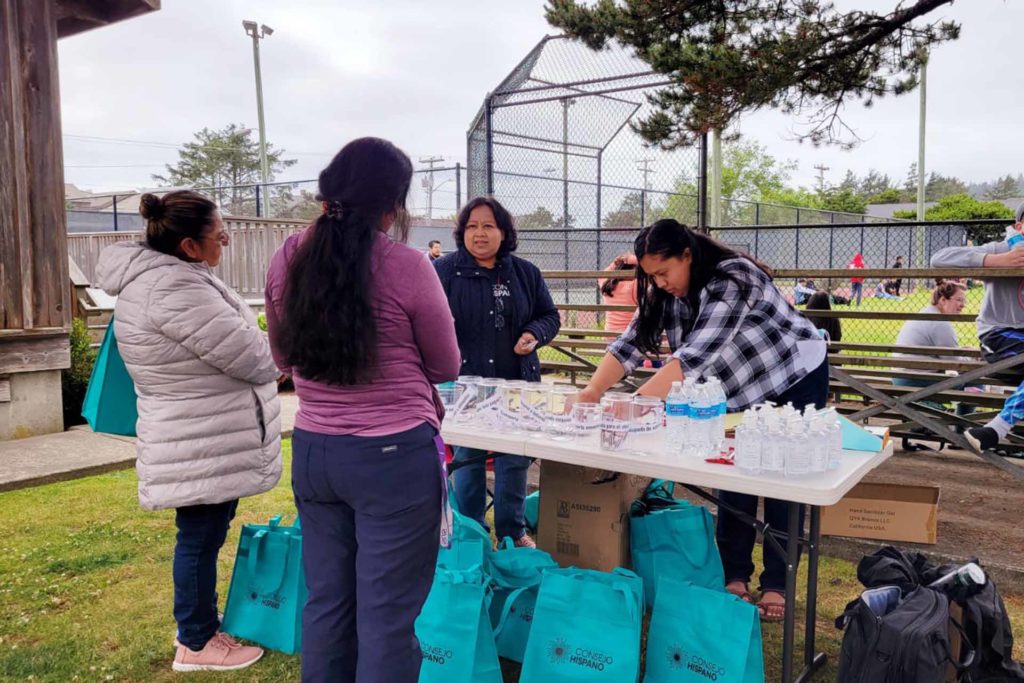
New Beginnings: Looking Forward from the 10-year Wellville Project
An open letter to our Wellville communities, partners and friends: On my hike early this morning, I paused for a moment – immersed in stillness,
Clatsop County, in the northwest corner of Oregon, is a popular seaside destination for tourists from Portland, about 100 miles away, and beyond. The county was named for the Native American tribe first to live along this stretch of the Pacific Coast from the mouth of the Columbia River south to Tillamook Head. The county seat, Astoria, is the oldest European settlement west of the Rockies. The primary industries are forestry, fisheries, and tourism/recreation. There is also a large Coast Guard facility in Astoria.
Primary health-related issues are obesity/lack of physical activity, addiction and other mental health issues (including ACEs), and housing insecurity.
Over the decade, with the support of Wellville advisor Marya Stark, the Clatsop community rallied around the need for greater equity, child care and food access. They launched initiatives to increase mental health awareness, training and services, with a particular focus on trauma. They also expanded local collaboration through groups like Clatsop CHART: Community Health Advocacy + Resource Team.
Along the way, Wellville has supported local leaders, like the Clatsop residents who are renovating an historic building to create the Outpost, a space for community connections and services.
Following large outbreaks at the fish canneries, which employ a substantial Hispanic and Latino population, some Clatsop residents began pointing fingers about who is responsible for the growing number of cases.
Alarmed at the increasingly heated and discriminatory comments, local leaders formed the Clatsop Equity Committee, bringing people together from Clatsop’s Public Health Department, the Oregon Health Authority, the two local hospitals, Consejo Hispano, The Harbor, Clatsop Community Action, Oregon Health & Science University and more.
By finding continuous – and creative – ways to elevate the voices of Hispanic and Latino residents, the committee has influenced the way Clatsop leaders are allocating resources. For instance, one outreach effort by Consejo Hispano at Wednesday night soccer games invited community members to vote – using Monopoly money and jars labeled with various priorities – on how to invest the federal American Rescue Plan Act (ARPA) dollars received for COVID-19 recovery.

More affordable daycare and good paying jobs were the overwhelming winners. This feedback was shared through op-eds and ultimately with the Clatsop County Board of Commissioners, who ended up allocating 20% more funds to daycare.
Clatsop Equity Committee
A group of local stakeholders are working to identify sustainable long-term initiatives to improve equity. The group is also growing the impact and influence of the Committee, including by publicizing its work in local media.
Regional Health Equity Coalition (RHEC) designation
Stakeholders from Clatsop, Tillamook and Columbia counties are collaborating to apply for an RHEC designation from the state. RHECs are collaborative, community-led, cross-sector groups organized regionally to identify and address health equity issues. Coalitions prioritize communities of color as primary populations of focus.
Pre-kindergarten (pre-k) slots
The team engaged Social Finance and the Sorenson Impact Center to complete a feasibility study for a pre-kindergarten Pay for Success program. While Pay For Success wasn’t viable, the process gave the County valuable data and relationships for adding pre-k and child care slots. The team is working on other angles for a smaller-scale expansion of pre-K.

An open letter to our Wellville communities, partners and friends: On my hike early this morning, I paused for a moment – immersed in stillness,

There is so much in our hearts and minds following these tumultuous past few months and intense past few days. This is a moment to consider the causes of the consequences that are now on full display. It’s time to call out what led to such health disparities and what will it take to improve outcomes for all.
When Covid-19 hit the US, we asked ourselves: Now that everyone is just trying to stay alive and save jobs, is Wellville just a distraction? We can’t just preach about the long term and what people want to achieve by the end of the Wellville project while they are busy responding to the short term. Instead, we tried a different question: How can we build a better long-term future even as we address current needs?
Population: 40,224
No Data Found
Land area (sq. mi): 829.05
Median age: 44.2
Median household income
No Data Found
2019 data
Poverty rate
No Data Found
2019 data
High school graduation rate
No Data Found
2019 data
Severe housing problems *
No Data Found
* Percentage of households with at least 1 of 4 housing problems: overcrowding, high housing costs, lack of kitchen facilities, or lack of plumbing facilities (2013-2017).
Adult obesity
No Data Found
2017 data
Adult smoking
No Data Found
2018 data
Years of potential life lost *
No Data Found
* Years of potential life lost before age 75 per 100,000 population. Data covers 2017-2019.
Uninsured *
No Data Found
* Persons under the age of 65 (2019 data)
Per capita Medicare spending *
No Data Found
* As a percentage of insured; does not include uninsured. Data from 2019.
Insurance sources
No Data Found
2019 data
| Cookie | Duration | Description |
|---|---|---|
| cookielawinfo-checkbox-analytics | 11 months | This cookie is set by GDPR Cookie Consent plugin. The cookie is used to store the user consent for the cookies in the category "Analytics". |
| cookielawinfo-checkbox-functional | 11 months | The cookie is set by GDPR cookie consent to record the user consent for the cookies in the category "Functional". |
| cookielawinfo-checkbox-necessary | 11 months | This cookie is set by GDPR Cookie Consent plugin. The cookies is used to store the user consent for the cookies in the category "Necessary". |
| cookielawinfo-checkbox-others | 11 months | This cookie is set by GDPR Cookie Consent plugin. The cookie is used to store the user consent for the cookies in the category "Other. |
| cookielawinfo-checkbox-performance | 11 months | This cookie is set by GDPR Cookie Consent plugin. The cookie is used to store the user consent for the cookies in the category "Performance". |
| viewed_cookie_policy | 11 months | The cookie is set by the GDPR Cookie Consent plugin and is used to store whether or not user has consented to the use of cookies. It does not store any personal data. |